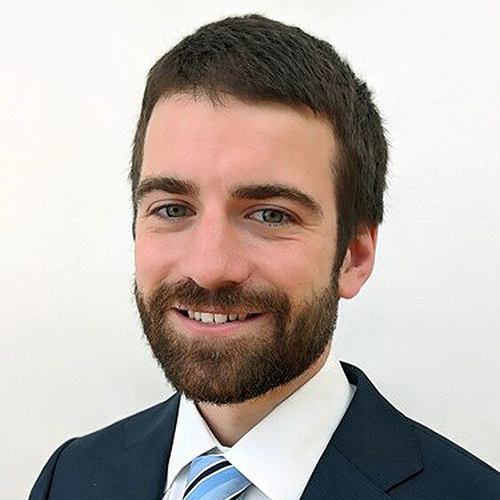Penn LDI Small Grants Program
2023 Projects
Penn LDI has annually provided small grant funding for early-stage investigations that would otherwise not qualify for larger NIH or other institutional grants. In 2023, eight Senior Fellows and five Associate Fellows have been awarded pilot grants for research projects across a range of topics involving the cost, access, quality, and equity of health care. Below are the researchers and their projects.

Improving New Therapy Appointment Attendance, Knowledge, and Experiences (INTAAKE)
Principal Investigator: Emily Becker-Haimes, PhD | Perelman School of Medicine
Ensuring equitable and timely access to evidence-based mental health care for youth with anxiety and related disorders is critical. However, up to 70% of youth referred will not attend an initial appointment. Innovative, tailored models are needed to improve engagement in evidence-based treatments for pediatric anxiety disorders. Family peer service models are especially promising to address this but have not yet been tailored for families of youth with anxiety. We will conduct formative work to: 1) Identify family and youth characteristics associated with failure to follow-through with an initial appointment after reaching out for services within the Pediatric Anxiety Treatment Center at Hall-Mercer (PATCH) (n ~400 youth), and 2) Recruit 10 caregivers of youth who do not end attend their intake at PATCH after expressing initial interest to share their primary perceived barriers to engaging in care via brief interviews. Collectively, results will inform key targets for the design of a family peer program to improve engagement in evidence-based anxiety services.
Results:
Our long-term goal is to develop a Family Peer (FP) program to facilitate connecting families seeking care for anxious youth to evidence-based treatment. To inform program development, we conducted a retrospective review of our appointment inquiry database (N=467 youth) within the Pediatric Anxiety Treatment Center at Hall Mercer (PATCH) to identify families at-risk for failing to engage in treatment. Concurrently, we interviewed 12 caregivers of youth who did not attend their intake at PATCH after expressing initial interest about barriers to care and suggestions for FP program development. We found that most families were “lost” to clinic contact before scheduling an intake. Among families who did successfully schedule an appointment, 82% attended. Youth from single parent households and those with established mental health diagnoses were at highest risk for non-attendance. Interviewed caregivers reported a range of barriers to care and expressed high interest in FP support to address these.
The PI received funding from the Pew Charitable Trust to launch the developed Family Peer program within the Pediatric Anxiety Treatment Center at Hall Mercer (PATCH).
Presentations at Anxiety & Depression Association of America (ADAA) Conference, April 11-14, 2024, Boston, MA
- “Who Makes it to Treatment? Identifying Families at Risk for Intake Appointment Non-Attendance Within a Community Mental Health Pediatric Anxiety Clinic”
- “Caregiver Perceptions of the Utility of a Pediatric Anxiety Specific Family Peer Program”

Developing a Predictive Model to Identify Cancer Patients at Risk of Financial Toxicity
Principal Investigator: Meredith Doherty, PhD, LCSW | School of Social Policy & Practice
Co-Investigators: Tamara Cadet, PhD, MPH; Ravi Parikh, MD, MPP
Oncology social workers and financial advocates are trained to effectively respond to the financial concerns of patients and connect them with resources that can reduce the financial burden of care. Most cancer programs have to target these services to patients they perceive to be most “at-risk” but have not yet found a way to proactively identify these patients. To address the need to identify patients with cancer who are at-risk of financial toxicity and target resources quickly, we will develop and validate a predictive model for financial toxicity that uses real-time electronic health record (EHR) data to preemptively identify patients at risk. This data-driven model will be used to (1) create default referral pathways (e.g., nudges) for referring at-risk patients to financial advocacy or social work services and (2) inform staffing and budgetary recommendations to expand access to on-site financial and material support interventions at Penn Medicine.

ACA Insurance Expansion and the Disparity in Health Care Access
Principal Investigator: Hanming Fang, PhD | School of Arts & Sciences | The Wharton School
The ACA led to significant expansions of health insurance coverage in the U.S. through a combination of Medicaid expansion and an increase of private insurance coverage from the health insurance exchanges. Because Medicaid and private insurance have vastly different payment rates to physicians, the ACA insurance expansion may alter the new physicians’ choices of practice locations and even cause some physicians to relocate. Both can subsequently affect the patients’ access to physicians and exacerbate the disparities in access to health care by geographic location and the social economic status of the patients. We aim to utilize geographic variations in insurance enrollment changes induced by the ACA to quantify the effect of different types of health insurance enrollments on physician location choices, we then use these estimates to quantify how the heterogeneity in ACA health expansion across space in terms of sources of insurance coverage expansion affects the physician access disparity.
Results:
We study the impact of health insurance expansion following the implementation of the Affordable Care Act (ACA) on the spatial disparity in the access to medical resources, particularly physicians. Exploiting the geographic variations in the ACA-induced insurance enrollment changes, we quantify the effects of health insurance enrollment, particularly the composition of the private insurance and the Medicaid enrollment, on physicians’ location choices. We find that an increase in private insurance enrollment in a location attracts physicians to relocate into the location, whereas an increase in Medicaid enrollment reduces the inflows of physicians, particularly those who are more experienced or from top-tier medical school programs. Simulations based on the estimated physician location choice model show that the ACA-induced insurance expansions may have exacerbated the physician access disparity in the U.S.

Exploring an Innovative Approach to Address Treatment Gaps for Hospitalized People who Inject Drugs
Principal Investigator: Rachel French, PhD, RN | School of Nursing
Co-Investigators: Peggy Compton, PhD, RN; Rachel McFadden, BSN, RN; Jeanmarie Perrone, MD
Many evidence-based strategies to mitigate the unabating overdose crisis in the U.S. continue to be underutilized or not implemented. Overdose preventions sites – which have been demonstrated to substantially reduce overdose deaths and HIV and hepatitis C incidence – are one such example. Hospitals in Europe and Canada have embedded OPS in hospitals with promising results. Embedding OPS in hospitals is an untapped lever holding promise with translation to US hospitals, though it is unclear if such an approach is feasible and acceptable. The purpose of this study is to understand the context of care at the Hospital of the University of Pennsylvania where an embedded OPS could help to address pressing concerns over increasingly frequent unsupervised injection drug use among hospitalized patients with substance use disorders. Findings from this study will establish the feasibility of imbedding an OPS at HUP for hospitalized people who use drugs, and inform the implementation and operations of this strategy.
Results:
We conducted 28 semi-structured interviews with clinicians (e.g., social workers, nurses, physicians), leadership, and security at HUP, as well as people who use drugs (PWUD) who had been recently hospitalized. Participants reported that an overdose prevent site (OPS) at HUP would provide a safe space for PWUD during hospitalization. Participants simultaneously raised concerns, such as legality and organization, that must be addressed for such implementation to be feasible and acceptable to interested parties. Allowing PWUD to safely use drugs while hospitalized could potentially decrease rates of patient-directed discharges and increase completion of necessary medical regimens, thereby reducing morbidity and unnecessary readmissions.
Resulting Products:
- Poster presented at The Association for Multidisciplinary Education and Research in Substance use and Addiction (AMERSA) 2023 conference in Washington, D.C.
- French, R., McFadden, R., Lowenstein, M., O’Donnell, N., Perrone, J., Aronowitz, S.V., Thakrar, A.P., Schachter, A., Turi, E., & Compton, P. (2025). A Qualitative Study Exploring the Feasibility and Acceptability of Embedding an Overdose Prevention Sites in a U.S. Hospital. Journal of Substance Use and Addiction Treatment.

The Economics of Urgent Care Center Entry
Principal Investigator: Ari Friedman, MD, PhD | Perelman School of Medicine
Co-Investigators: David A. Rosenkranz, PhD; Natalia Serna, MS
The market for unscheduled health care services is a focal point for health care utilization and spending. It has changed significantly over the last two decades: hundreds of hospital emergency departments have closed, and the number of urgent care centers has doubled. This upheaval raises questions about the market’s structure and welfare. We will study how it has affected access, utilization, spending, and health outcomes for a large population and the universe of their health care claims.
Results:
Using LDI-supported data and computing resources, we found that urgent care centers (UCCs) appear to be closing a gap in access to health care by locating in Zip Code Tabulation Areas (ZCTAs) without hospitals and by not disproportionately entering areas with higher insurance rates or income. Thus UCCs do not necessarily exacerbate existing inequalities in access to health care along these sociodemographic dimensions. We find that UCCs tend to locate in more populated ZCTAs. Hospital presence may deter UCC entry, or UCCs may increase access to healthcare by locating away from areas already served by hospitals. These formed crucial preliminary results and proof of feasibility supporting the submission of two foundation and one federal R01 proposals.

Examining Attitudes Towards the Measurement, Collection, Storage, and Use of Data About Gender Identity in Children, Adolescents, and Their Caregivers
Principal Investigator: Amy Hillier, PhD, MSW | School of Social Policy & Practice
Co-Investigators: Jose Bauermeister, PhD, MPH; Nadia Dowshen, MD, MSHP; Sarah Gzesh, MSW; Scott Jelinek, MD, MPH; Steven Marcus, PhD; Joseph Whelihan, MD; Sarah Wood, MD, MSHP
This research project aims to address the challenges faced by transgender and gender non-binary (TGNB) children and adolescents in accessing health care. These challenges include the lack of a systematic way to identify TGNB children early on, and negative healthcare experiences faced by TGNB adolescents due to misgendering and lack of knowledge among clinical staff. The study will develop and refine screening items for identifying TGNB children, understand the attitudes of TGNB adolescents and caregivers about collecting and storing data about gender identity, and generate suggestions for improving the use of this data. The research will use a Delphi method, semi-structured interviews, and a video-simulated clinical encounter to elicit detailed participant feedback and recommendations. By working towards universal collection of gender identity in a manner that reflects the values and concerns of TGNB patients and families, this research aims to improve healthcare access, quality, and safety for TGNB children and adolescents.
Results:
Our research project, “Examining Attitudes Towards the Measurement, Collection, Storage, and Use of Data about Gender Identity in Children, Adolescents, and their Caregivers,” explored the perspectives of adolescents and their caregivers on managing sexual orientation and gender identity (SOGI) data. Key findings from three pivotal studies revealed important insights. The Press Ganey Pediatrics Study, analyzing 156,690 survey responses, highlighted the need for respectful pronoun use and inclusive environments. A survey of 62,654 adolescents identified significant confidentiality concerns among LGBTQ+ youth, who preferred electronic data collection methods. Semi-structured interviews with 36 participants, including 16 trans/gender non-binary adolescents, uncovered barriers and facilitators to sharing SOGI information. Additionally, we
established the LGBTQ Health Improvement Committee at CHOP and engaged in focus groups to refine SOGI data collection practices. Our innovative video-elicitation exercise provided detailed participant feedback.
Resulting Products:
- The Role of Family Support in Moderating Mental Health Outcomes for LGBTQ+ Youth in Primary Care (JAMA Pediatrics)
- Society for Pediatric Research 2024 Richard D. Rowe Award for Clinical Research: Scott Jelinek, MD, MPH
- “Giving Agency Over Their Health”: A Content Analysis of Responses to a Patient and Family Satisfaction Survey Regarding Gender Inclusivity in a Large Pediatric Academic Center (slide deck)
- Inclusion & Privacy in Practice: An Examination of SOGI Data Collection and Confidentiality Concerns Among LGBTQ+ Adolescents in a Large Pediatric Primary Care Network (slide deck)

Episodes of Care for Emergency Medicine: Developing Novel Approaches to Value-Based Payment for Patients Treated and Released From Emergency Departments
Principal Investigator: Austin Kilaru, MD, MSHP | Perelman School of Medicine
Many Americans receive care for acute illness in emergency departments (EDs). Often, patients receive full evaluations in the ED and can be discharged home without requiring hospitalization. Yet few providers are accountable for patient outcomes following ED encounters. In particular, there is limited care coordination, monitoring, and other support for patients who are discharged from the ED. Meanwhile, reimbursement for outpatient emergency care remains primarily fee-for-service. No value-based payment models have specifically focused on the care delivered during and after an ED encounter. The goal of this project is to conduct foundational research that will inform design of value-based payment models for episodes of care anchored on ED treat-and-release encounters. We specifically focus on venous thromboembolism (VTE) as a model condition for which diagnosis and treatment commonly begins in the ED and for which complications can be avoided through care coordination and timely receipt of medications.
Results:
With this support from LDI, our team is the first to use administrative claims data to model episodes of care for patients discharged from the emergency department. We identified a cohort of approximately 60,000 patients diagnosed with venous thromboembolism (VTE), which includes deep venous thrombosis (DVT) and pulmonary embolism (PE). In preliminary analyses, we have determined that the rate of timely outpatient follow-up for these high-risk conditions is less than 50% although nearly all patients are expected to receive this care. Our current work is focusing on determining the rates that patients fill important medications to treat these conditions (anticoagulants) and to characterize readmission rates based on whether patients obtain timely outpatient follow-up. We hope to publish these findings in the next six months and share with both payers, policymakers, and specialty leaders.

Learning From Covid-19 to Prepare for the Future: Understanding Vaccine Uptake in a Low-Income Sub-Saharan African Context
Principal Investigator: Iliana Kohler, PhD | School of Arts and Sciences
Co-Investigator: Helene Purcell, PhD
Vaccinating a critical fraction of the global population against Covid-19 is crucial for curtailing the pandemic and its far-reaching health, social, and economic implications. Low-income countries (LICs) continue to lag behind this goal despite adequate global supply of vaccines. Using data from the Malawi Longitudinal Study of Families and Health (MLSFH) linked to GIS information, administrative vaccine data and extensive pre-Covid 19 information on health behaviors and perceptions, we investigate how LIC individuals make vaccination decisions in a rapidly unfolding and changing pandemic context. We also investigate the supply- and demand-side drivers (including accessibility to vaccines and vaccine hesitancy) of low Covid-19 vaccination rates in Malawi. The project will inform policy makers as they not only continue to combat the current Covid-19 pandemic, but also try to create resilient health systems and policies that allow LICs’ resource-constrained societies and health care systems to prepare for future epidemics and health crises.
Results:
Vaccinating a critical fraction of the global population against Covid-19 was crucial for curtailing the pandemic and its far-reaching health, social, and economic implications. Yet, low-income countries (LICs) lagged behind this goal despite adequate global supply of vaccines. Using data from Malawi, we investigate how LIC individuals make vaccine decisions, and how interventions and policies can increase vaccine uptake to better target at-risk populations. We use exceptional LIC data from the Malawi Longitudinal Study of Families and Health (MLSFH) linked to administrative vaccine data, GIS information, and extensive pre-Covid-19 information on health behaviors and health status perceptions. We identified socioeconomic, demographic, and health differences between vaccinated and not-vaccinated individuals. We assessed how health information diffused through families and influenced vaccination decisions, as well as the supply and demand side drivers (including accessibility to vaccines and vaccine hesitancy) of low vaccination in Malawi.
Resulting Product:

Identification of Culturally Responsive and Unresponsive Mental Health Care: Initial Steps Towards Developing an AI-Based Feedback Tool for Therapists
Principal Investigator: Patty Kuo, PhD | Perelman School of Medicine
Co-Investigators: Amber Calloway, PhD, Torrey Creed, PhD
Black, Indigenous People of Color (BIPOC) and lesbian, gay, bisexual, transgender, and queer (LGBTQ+) individuals often report receiving culturally inappropriate mental health care, contributing to disparities in outcomes. No scalable tools are designed to detect what aspects of therapist-client interactions contribute to culturally (in)appropriate care (cultural competency [CC]). Studies of natural language processing (NLP) tools indicate that they provide accurate, automated feedback to therapists on clinical skills, could similarly provide feedback on CC, and reduce inequities in care for BIPOC and LGBTQ+ clients. The results of this mixed methods study will guide future development of an NLP CC feedback tool that will be implemented in community mental health clinics. We will examine qualitative themes in therapist-client interactions and quantitative differences in therapeutic processes among sessions with low and high client ratings of CC to more holistically understand factors that contribute to culturally inappropriate care.
Results:
We examined how conversations surrounding race, gender, and sexuality unfolded in 30 cognitive behavioral therapy (CBT) sessions with low and high ratings of therapist common factors (empathy, collaboration, understanding, and interpersonal effectiveness). Clients initiated conversations about cultural identities across the majority of sessions, and therapists interventions often did not acknowledge cultural identities that clients discussed. In sessions with high therapist common factor ratings, therapists focused on thoughts, feelings, and behaviors associated with clients’ cultural contexts. In sessions with low therapist common factor ratings, therapists shifted the focus of conversation, or clients’ cultural contexts were discussed as small talk.

Promoting Retention of Very Low Nicotine Content Cigarette Information by Tailoring Health Communications in Three Priority Populations to Ensure Equitable Effectiveness of a National Nicotine Reduction Standard
Principal Investigator: David Lydon-Staley, PhD | Annenberg School of Communication
Co-Investigators: Melissa Mercincavage, PhD; Andy Tan, PhD, MPH
Plans to enact a national nicotine reduction standard gained momentum in June 2022 when the Food and Drug Administration announced it would begin rule making on this policy. To ensure that the nicotine reduction standard optimally reduces health disparities in smoking, it will be imperative for any public health initiatives associated with the standard to address the unique needs and preferences of priority populations. This study will develop health messages tailored towards three priority populations (Black/African American adult, rural adult, and young adult cigarette smokers) to promote knowledge about the risks and benefits of very low nicotine content cigarettes to maximize the success of the nicotine reduction standard.
Results:
Nicotine false beliefs are associated with reduced smoking cessation success and a lower likelihood of using less harmful nicotine products. Three priority smoking populations: African Americans, rural adult, and young adult smokers in the U.S. hold more nicotine false beliefs relative to other groups. In a message optimization phase (n=200 per priority population), we identified curiosity-eliciting message components with the greatest likelihood of reducing nicotine false beliefs in each priority population. Following message optimization, we compared exposure to tailored messages (from the optimization phase) with exposure to no nicotine messages and standard nicotine messages. Tailored messages significantly reduced nicotine false beliefs in Black/African American smokers and rural adult smokers. In young adults, tailored messages significantly reduced nicotine false beliefs compared to no messages but did not show additional benefit beyond standard nicotine messages.

Survey of Incarcerated Persons Within the Philadelphia Prison System Assessing Perceptions of Telehealth for Surgical Care
Principal Investigator: Jesse Passman, MD, MPH | Perelman School of Medicine
Co-Investigators: Jon Morris, MD; Judy Shea, PhD
The Philadelphia Prison System houses over 6,000 inmates, 80% of whom come from medically underserved communities. As prisoners are the only group with constitutionally mandated healthcare, the prison system provides over 100,000 clinical assessments per year. However, significant logistical barriers exist to receiving specialty surgical care which may be obviated by the development of a telemedicine program within the prison clinic. While telemedicine programs for incarcerated persons have been previously developed, little research has been performed to demonstrate their acceptability to this vulnerable population, nor in applying this model to surgical care. The Penn Center for Surgical Health will design and administer a survey instrument to incarcerated persons and prison health care workers to describe their perceptions of a potential telemedicine program for pre- and post-operative surgical care. These data will be used to inform the future development of a telemedicine program for surgical care within the prison system.

Implementing a Firearm Safety Program in the Pediatric Intensive Care Unit
Principal Investigator: Anireddy Reddy, MD, FAAP | Children’s Hospital of Philadelphia
Co-Investigator: Charlotte Woods-Hill, MD
In recent years, firearm-related deaths have increased at an alarming rate, such that they are now the leading cause of death among children and adolescents. The Children’s Hopsital of Philadelphia (CHOP) has introduced firearm safety education and distribution of gun locks in primary care and emergency department settings. However, there are high-risk children that bypass these settings and are admitted to the pediatric intensive care unit (PICU). The purpose of this project is to utilize implementation science strategies to translate the existing education and gun lock distribution program to the PICU. Specifically, this will be a hybrid type II effectiveness-implementation design in which both effectiveness and implementation outcomes are equally measured. The first aim is to perform contextual inquiry in order to identify the barrier/facilitators as well as acceptability, feasibility, and appropriateness of a firearm safety program in the PICU. Using these findings, the second aim is to implement a hybrid type II pilot program in the PICU.
Results:
To our knowledge, this is the first assessment of acceptability, appropriateness, and feasibility of a firearm safety program among pediatric critical care providers. Our study showed that 83% of our PICU providers believe they should be involved in firearm safety education. Moreover, there was high acceptability (90%) and appropriateness (71.5%) reported. There was no significant different in these outcomes between firearm and non-firearm owners. The top three barriers identified were 1) insufficient time to provide education 2) not feeling equipped to provide education and 3) concern that families would not be accepting of the program. The top three facilitators identified were 1) receiving training on how to educate families 2) dedicated PICU providers to support the program and 3) dedicated staff apart from service team to provide education. These findings informed our pilot firearm safety program in the PICU, through which safe storage counseling and gun lock distribution is ongoing. Efforts from this project are part of CHOP’s Firearm Safety in Clinical Care Initiative to bring safe storage counseling to multiple settings within CHOP.

Travel Distance From Residence to Substance Abuse Treatment Facility Among Pregnant and Postpartum People With Opioid Use Disorder in a Statewide Sample
Principal Investigator: Xi Wang, PhD | Children’s Hospital of Philadelphia
The rate of opioid use disorder (OUD) among pregnant and postpartum people has increased dramatically over the past decade. We propose to conduct a retrospective cohort study to provide a deeper understanding of the accessibility of substance abuse treatment facilities for pregnant and postpartum women with OUD. Within a statewide cohort of publicly insured people in Pennsylvania, we will characterize the travel distance from the residence of pregnant and postpartum people with OUD to the nearest substance abuse treatment facility that has a tailored program for pregnant and parenting people. Utilizing person-level population-based data will allow us to characterize structural disparities in treatment access by geography and race. This information is critical for the development of future equity-focused interventions and policies to optimize evidence-based OUD treatment access for pregnant and postpartum people and ultimately reduce disparities in maternal and neonatal morbidities and mortality influenced by OUD.
Results:
Our sample included 2,790 Medicaid-enrolled birthing people with OUD and 652 substance abuse treatment facilities that provide tailored programs for pregnant/postpartum people and accept Medicaid as payment source. The travel time from residence to the nearest treatment facility varied across racial groups and geographic areas. Only 54% of opioid-dependent birthing people living in small towns and 27% of people living in rural areas were within a 30-minute drive to the nearest treatment facility, while the percentage was 90% among people living in metropolitan areas. In addition, for 53% of opioid-dependent birthing people in small towns and 96% of people in rural areas, there was no mass transit route from their residence to the nearest treatment facility. Programs aiming at improving the outcomes for birthing people impacted by OUD should target the subgroups and geographic areas that had the most pronounced barrier of long travel time to access substance abuse treatment.